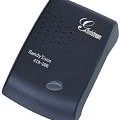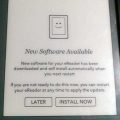I bought a 3D printer, a Bambu Lab A1 mini, from the official website. It took three days to arrive at my front door from the warehouse.
Here is the list of the order.
- A1 mini Printer $249.00
- Hotend with nozzle $15.99
- PLA Basic Jade white 1KG $29.99
- Discount: -14.00
- Shipping $30.00
- Tax: $37.32
- Total: $348.30
I wanted a 3D printer many years ago. My shopping habit is always like this.
- I am interested in something.
- Google it, looking for the reviews.
- Check the alternative products or replacements.
- Think about the cost to have it, the cost to run it, and the cost to repair it if it breaks.
- Think about the total cost and how often I will use it.
- Wait about one week. If I still want it seriously, I will run this list again and find a trusted vendor to purchase it.
Why did I buy Bambu Lab A1 mini?
Bambu Lab 3D printer is plug and play.
Plug and play is so important to me. I want to focus on the 3D design, and printing the prototype.
I don’t want to spend a lot of time to calibrate the machine.
There are a lot of reviews on the Internet. I don’t want to repeat it. I just want to record what I have and experience.

 I opened the box and removed the foam. The big box has the Bambu A1 mini 3D printer and a sample filament.
I opened the box and removed the foam. The big box has the Bambu A1 mini 3D printer and a sample filament.

I put the 3D printer on the IKEA LACK table. The very first job is to print the small boat. The whole printing process has very strong movement. The table is kind of shaking. So I put the printer on the ground now.
The 1KG Jade White PLA Basic filament arrived separately. I used them all until last week.
Here are some products I printed.

 I designed the wire clip. It is used to fasten the cable under the cabinet.
I designed the wire clip. It is used to fasten the cable under the cabinet.
 The light cage. The design looks good. The end product is not as good as I expected. I thought it was a support issue or an overhanging issue. I will redesign it.
The light cage. The design looks good. The end product is not as good as I expected. I thought it was a support issue or an overhanging issue. I will redesign it.
The good news is that it works.
The thing I printed yesterday is a clock face.
 There is a free clock components “Kit-011” that comes with the Bambu Lab A1 mini. I just need to go to the Maker World, search the name, and find the printing files.
There is a free clock components “Kit-011” that comes with the Bambu Lab A1 mini. I just need to go to the Maker World, search the name, and find the printing files.
 I learned from my daughter, Grace. She told me how to seal the surface and paint on it.
I learned from my daughter, Grace. She told me how to seal the surface and paint on it.
Oh, the clock surface is printed with Elegoo Rapid PLA + filament. I ordered two 1 kg spools. Still white because I can paint it.
Below is the random picture I took for the printing.














The shaking is ubiquitous across printers. And it’s kind of inevitable because the print head needs to be a certain weight but to print quickly it needs to stop and change direction a lot and obviously conservation of energy, it all gets put into the body of the machine, which causes it to rock if it’s not secure. That won’t always mess up your prints but obviously it can because we’re talking about tenths of millimeters. So sometimes I will either weight the machine down or fix it to the table in some way.
When printers were a lot slower they didn’t Shake as much so if it was super irritating then you could just change the print speed and make it a lot slower (and then you’ll probably want to turn the temperature down) but it is nice to be able to have it spit out things in an hour that 3 years ago would have taken an entire day.
Yes. You are right. I prefer to put the printer on the ground or a very heavy strong table.